The clutch system in your ATV is the main connection between your vehicle and the wheels’ controls. It’s an important constituent of the overall transmission system that doesn’t get much attention when everything works well. How does a clutch work?
An ATV clutch works by ensuring stability in the power generated from the ATV engine to work with a transmission. The mode of operation in a clutch will vary depending on whether it is a sheave clutch or a centrifugal clutch. It can also use a multi-plate clutch design.
The rest of the article will look at the different types of clutches you may find in an ATV and how they work.
A clutch is an integral unit in any vehicle’s power transmission, and an ATV is no different. When your ATV is on, the engine spins all the time, but the wheels do not.
The clutch ensures smooth engagement between the spinning engine and the transmission, ensuring that there’s no slippage between them.
There are three main types of clutch you can find in any ATV model today. They are the sheave clutch, centrifugal clutch, and multi-plate clutch.
These clutches are mostly used in ATV models fitted with automatic CVT (continuously variable transmissions) systems. They are built to ensure the engine is constantly running at the best RPM needed to generate the highest power possible at any speed level.
This system consists of a primary and secondary clutch. These are also known as the drive/driven clutch.
The ATV engine’s crankshaft is linked to the primary clutch, which is joined to the secondary clutch through the drive belt. Finally, the ATV’s secondary clutch is linked to its transmission.
The primary and secondary clutches have movable and stationary sheaves where the drive belt fits.
The moveable sheave is fitted with a spring for compression and some flyweights.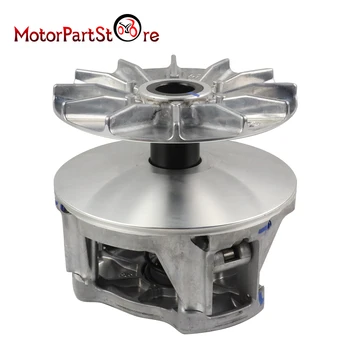 The weights are useful because they help the stationary and movable sheaves to maintain an appropriate distance.
The weights are useful because they help the stationary and movable sheaves to maintain an appropriate distance.
When your engine is running and the driveshaft spins, centrifugal sources move the flyweights and the stationary and movable sheaves around to force a gear change and deliver higher speeds when you need it.
Here’s a video showing the install of a sheave clutch:
The centrifugal ATV clutch gets its name from the fact that it relies on the centrifugal force generated while it is rotating to activate or deactivate the clutch system.
Different manufacturers have different designs and layouts for centrifugal clutches, but the operation mode is similar across the board.
The ATV engine’s crankshaft is hooked to the central or main drive shaft inside the clutch system. While the crankshaft rotates, the drive shaft spins with it. The entire clutch system is contained inside an external clutch drum linked to the ATV transmission.
A collection of springs linked to the ATV drive shaft nestles between the outer or exterior clutch drum and the central drive shaft. Some clutch shoes (weighted) are affixed to the other extreme of the springs.
These shoes don’t interact with the clutch drum’s inner side due to the tension delivered by the springs.
The ATV’s drive shaft spins both the shoes and the springs as the crankshaft spins. With an increase in the speed of rotation, the shoes’ centrifugal force also increases. The force pushes the shoes outward, so they can come in contact with the clutch drum’s inner face and bind against it.
As soon as the shoes come in contact with the ATV clutch drum, the drum will spin, providing drive or power from the ATV engine into the transmission and the rear wheels.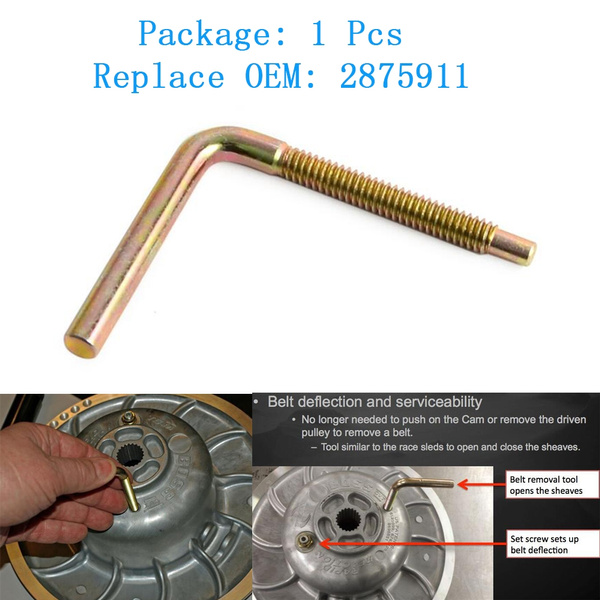
Here’s a video showing how a centrifugal clutch works:
A multi-plate clutch is a popular option found in many ATV models. It receives power from an engine and channels it to the input shaft of the transmission. From here, the power moves to the rear wheels through the gearbox.
The crankshaft coming from the ATV engine is linked to a drive gear joined to the outer clutch basket. The clutch basket rotates as the crankshaft spins. Inside the outer basket, a clutch boss (a smaller inner basket) is linked to the ATV transmission.
A set of friction clutch plates (also known as clutch discs) separate the inner and outer baskets. A section of the plates is joined to the outer basket while some drive clutch plates hook up to the inner clutch basket.
A section of the plates is joined to the outer basket while some drive clutch plates hook up to the inner clutch basket.
The clutch plates are protected from the top by a set of springs and the pressure plate. The pressure plate is designed to hold down the clutch plates to ensure the friction plates are bound tightly to the drive plates for a clean lock.
As the crankshaft rotates the outer basket connected to it, the tightly locked clutch plates trigger rotation in the inner basket as well. The result is rotation in the ATV transmission input shaft, which drives the ATV’s gearbox and rear wheels.
Here’s a video showing the operation of a multi-plate clutch:
We’ve seen a peek into what happens under the hood with the main types of ATV clutches.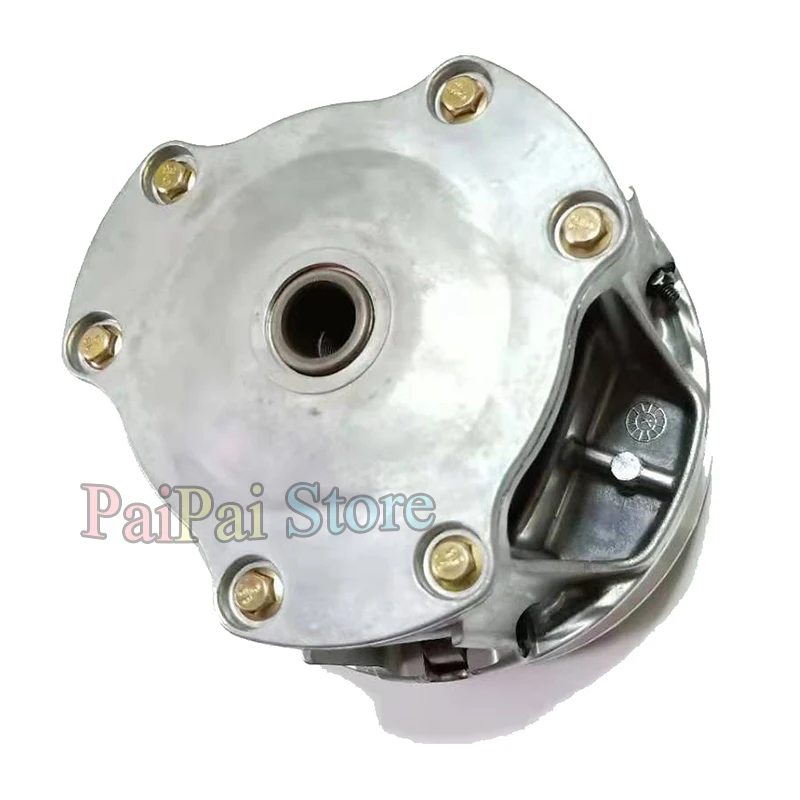 The convoluted nature of the systems means that your clutch needs regular maintenance.
The convoluted nature of the systems means that your clutch needs regular maintenance.
If you take your ATV to a maintenance shop, you’ll likely get clutch maintenance by default. However, if you’re doing the job on your own, there are a few things you should know:
Here are some things to watch out for when inspecting your ATV clutch:
.jpg?x-oss-process=image/auto-orient,1/quality,q_70/resize,m_mfit,w_350,h_350)
These are some of the major maintenance tips to keep in mind for your ATV’s clutch. If you don’t ensure regular maintenance for the vehicle, there is a high possibility that it will develop any of the common problems associated with ATV clutches.
These include clutch slipping, clutch creeping and the attendant pungent smell, and a jerky feel in the lever. Repair these problems will cost more than maintenance in most cases, so give the clutch the desired attention.
Don’t forget to practice sensible clutch use while out riding to reduce the chances of damage. Don’t use your clutch as an aid for braking, and don’t leave your foot on it half the time.
Basically, any scenario that doesn’t make sense with your standard car or motorcycle clutch should be avoided with your ATV as well.
The clutch operation in an ATV is a very elaborate process regardless of the ATV clutch type in your model.
Understanding how each type of clutch works makes it easier for you to deliver regular maintenance if you have the DIY skills. If you don’t have the skill to handle the maintenance, outsource it to avoid more serious damage.
Sharing is caring!
Aftermarket clutch kits for ATVs and UTVs are some of the most popular types of upgrades on the market. However, for those just starting out in this hobby, it might not be immediately clear when these kits are essential to your riding experience. Many people ask, “When should you install an ATV or UTV clutch kit?” These are some instances and what these components can do for you.
However, for those just starting out in this hobby, it might not be immediately clear when these kits are essential to your riding experience. Many people ask, “When should you install an ATV or UTV clutch kit?” These are some instances and what these components can do for you.
If you notice how slowly your vehicle gets up to speed, it might be time to consider upgrading to a clutch kit. Though beginners need the stock clutch, more experienced riders want to increase their speed and cut down on how long it takes to get up to that clip. Aftermarket clutch kits are more effective at transferring power and shifting gears between the different speed settings. As such, they allow you to put the pedal to the metal and make it count.
You’ll also need a clutch kit when you want to improve the lifespan of your ride’s belting system. As the primary component transferring power throughout your ATV or UTV, your clutch belt sustains a lot of wear and tear over time.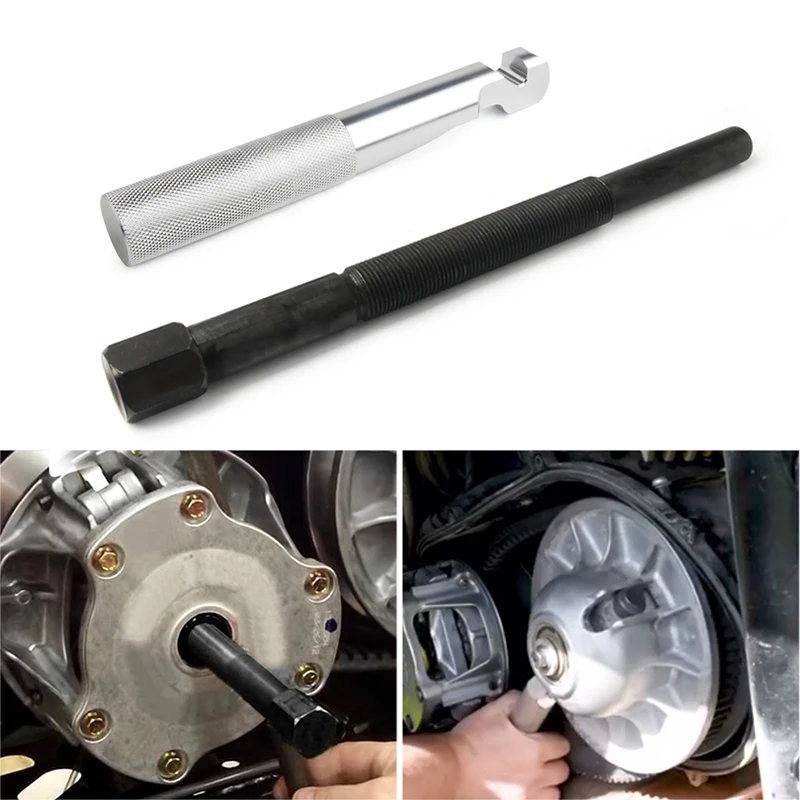 From nicks and cuts to stretching and slipping, there are several ways that these components can deteriorate and wreak havoc on your experience and wallet. So if you want these parts to last a bit longer, upgrade to a clutch system that better distributes the horsepower.
From nicks and cuts to stretching and slipping, there are several ways that these components can deteriorate and wreak havoc on your experience and wallet. So if you want these parts to last a bit longer, upgrade to a clutch system that better distributes the horsepower.
Backshifting is a common riding term that describes how responsive your ATV or UTV is as you activate and deactivate the throttle. Vehicles with strong backshifting abilities can immediately return to their previous RPM after brief points of laying off the throttle—as you’d do on sharp turns. On the other hand, weaker backshifting requires you to spend time accelerating back to that point. Upgrading your clutch can improve your backshifting by promoting a better transfer of power between your axles and wheels. This way, your RPM stays up even after changes in your acceleration rate.
One of the most noteworthy instances of when you should install an ATV or UTV clutch kit is when you have several other modifications on your ride.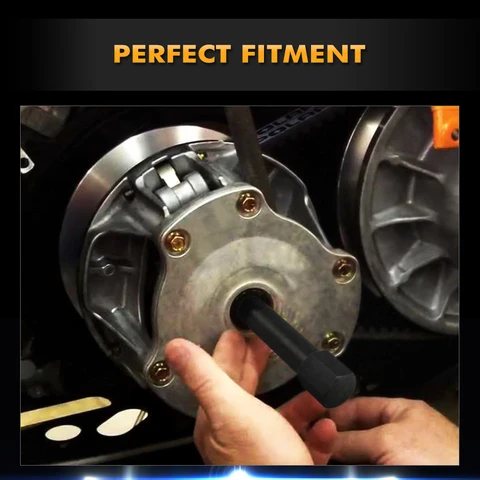 Whether you’ve recently upgraded your horsepower or changed your tires, the clutch is the system that ties all these parts of your machine together. For this reason, it’s always a good idea to use an aftermarket clutch kit to ensure these modifications perform well together. Otherwise, you risk putting some of that horsepower to waste or even burning out your belt.
Whether you’ve recently upgraded your horsepower or changed your tires, the clutch is the system that ties all these parts of your machine together. For this reason, it’s always a good idea to use an aftermarket clutch kit to ensure these modifications perform well together. Otherwise, you risk putting some of that horsepower to waste or even burning out your belt.
For a supply of motorsport performance parts that work with any type of ATV or UTV, reach out to Dynojet. We carry a series of aftermarket clutch kits and belts, each designed with a specific make of vehicle in mind. As such, we’re confident that you can find something that will suit your ride’s build and take your experience to the heights you’re after.
UTV Clutch Kit ATV
Posted in News & Hot Topics
Categories
Hot Tags
Sign Up for Our Newsletter:
Fans of ATV rides were waiting for the onset of heat like manna from heaven..jpg?x-oss-process=image/auto-orient,1/quality,q_70/resize,m_mfit,w_350,h_350) Well, the season can be considered open. At the same time, so that after the very first forays into the forest, the quadric does not end up in a service with expensive repairs, it must be thoroughly prepared for the summer.
Well, the season can be considered open. At the same time, so that after the very first forays into the forest, the quadric does not end up in a service with expensive repairs, it must be thoroughly prepared for the summer.
Dmitry Zlenko
If you forgot to change the oil in the fall, now is the time to refresh the contents of the engine crankcase. Used oil contains products of combustion, wear and oxidation, and such a cocktail will do more harm to the motor than good. Ideally, before draining the waste and changing the oil filter, you should use a special flush.
Add the special Motorbike Engine Flush to a warm ATV engine and let the engine idle for 10 minutes. During this time, flushing will remove contaminants from the channels of the oil system, wash away gear and friction wear products from the internal surfaces of the motor (after all, many ATVs have the so-called oil bath clutch), soot and sludge. At the same time, what is important, Motorbike Engine Flush does not damage the friction linings of the clutch, their glue and the varnish windings of the generator. Applying a ten minute flush will clean the piston rings and combustion chamber, which will improve compression. Due to the fact that the engine will be absolutely clean from the inside, freshly filled oil will last much longer.
It must be remembered that the ATV is operated in extremely harsh conditions, and therefore neither car oil, nor lubricant for road motorcycles, and even more so motor lubricant for lawn mowers, will not work for him. ATVs usually ride through mud at low speeds, at which both the radiator of the cooling system and the engine itself are poorly blown by oncoming air flows. In addition, on many quads diving into the swamp slurry up to the very handlebars, the heat exchanger is clogged with dirt, as a result of which the motor “works” beyond the upper limits of operating temperatures, especially in hot weather. Oil not intended for such conditions inevitably liquefies to the state of water, starts to burn, pressure in the system disappears, and stopping the “fiery heart” is only a matter of time.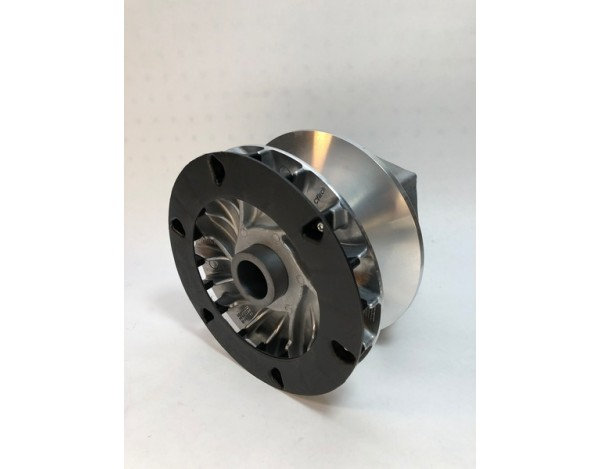 ATV oils, unlike automotive and others, are "charged" with a package of special additives that retains the characteristics of the lubricant in the widest temperature range. In addition, such oils are able to work for a long time and not burn out at high speeds.
ATV oils, unlike automotive and others, are "charged" with a package of special additives that retains the characteristics of the lubricant in the widest temperature range. In addition, such oils are able to work for a long time and not burn out at high speeds.
Liqui Moly ATV 4T Motoroil Offroad 10W-40 is one of the most popular products on the ATV oil market today. This synthetic engine oil was created specifically for heavily loaded off-road motorcycles. It can be poured into both ATVs, side-by-side (all-terrain vehicles with an automotive layout of controls), and motocross, pit bikes and enduro engines. This oil is universal and, thanks to a complex of additives, it is suitable for engines with a “wet” and “dry” clutch, air and water cooling, and even for engines that have a “wet” type variator.
However, grease with such viscosity characteristics is not suitable for all types of quads. For example, highly accelerated and turbocharged engines require oil with a wide variation in viscosity.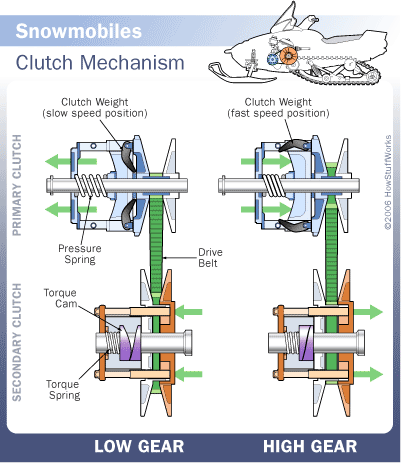 For such devices, the German brand Liqui Moly offers its top synthetic product "ATV 4T Motoroil 5W-50". The complex of anti-wear additives and the basic base ensure the correct and trouble-free operation of the engine of your ATV or UTV in the widest possible range of temperatures and loads, ensuring the performance and protection of the engine under any, even extreme operating conditions.
For such devices, the German brand Liqui Moly offers its top synthetic product "ATV 4T Motoroil 5W-50". The complex of anti-wear additives and the basic base ensure the correct and trouble-free operation of the engine of your ATV or UTV in the widest possible range of temperatures and loads, ensuring the performance and protection of the engine under any, even extreme operating conditions.
The use of Liqui Moly ATV Motoroil 4T 5W-50 engine oil ensures high reliability of ATV units and ease of starting the engine at very low temperatures (this is in case you do not get off the ATV even in winter). This grease mixes easily with all standard oils, and therefore, before changing the oil, it is not necessary to specifically flush the motor.
Well, since we touched on the issue of overheating, then when preparing your ATV for the summer, look at the condition of the radiator cells. And in general - make sure that there is a sufficient amount of antifreeze in the cooling system. If the radiator has a filler neck, then be sure to unscrew the plug and make sure that there is no scale inside the heat exchanger. Found "fossils" or noticed that the antifreeze is cloudy - flush the cooling system. Inexpensive and extremely effective Motorbike Kuhler Reiniger from the manufacturer Liqui Moly, dissolves scale and dirt in radiators, pipes and engine water jackets. The cleaner removes these deposits and ensures the normal operation of the cooling system. Motorbike Kuhler Reiniger is free of harsh acids and bases and should generally be used with every coolant change.
If the radiator has a filler neck, then be sure to unscrew the plug and make sure that there is no scale inside the heat exchanger. Found "fossils" or noticed that the antifreeze is cloudy - flush the cooling system. Inexpensive and extremely effective Motorbike Kuhler Reiniger from the manufacturer Liqui Moly, dissolves scale and dirt in radiators, pipes and engine water jackets. The cleaner removes these deposits and ensures the normal operation of the cooling system. Motorbike Kuhler Reiniger is free of harsh acids and bases and should generally be used with every coolant change.
Well, to prevent limescale from appearing inside the radiator and leaving no deposits, use only high-quality antifreeze, and do not forget to change it in a timely manner - at least once every two years, and ideally every year. A rather interesting “cooler” has appeared in the Liqui Moly product grid - long-term antifreeze Motorbike Langzeit Kuhlerfrostschutz GTL 12 Plus. This antifreeze is based on ethylene glycol, a combination of additives and a package of inhibitors. The technical fluid is designed to work in the cooling systems of heavily loaded engines (including aluminum ones) of modern ATVs, motorcycles, snowmobiles and other motor vehicles. Motorbike Langzeit Kuhlerfrostschutz GTL 12 Plus instantly blocks emerging pockets of corrosion and reliably protects the engine from overheating.
The technical fluid is designed to work in the cooling systems of heavily loaded engines (including aluminum ones) of modern ATVs, motorcycles, snowmobiles and other motor vehicles. Motorbike Langzeit Kuhlerfrostschutz GTL 12 Plus instantly blocks emerging pockets of corrosion and reliably protects the engine from overheating.
It goes without saying that even the most modern antifreeze will not save the engine from overheating if the radiator cells are clogged with dirt or grass seeds. So first of all, clean the heat exchanger from what prevents it from coping with its duties.
Ideally, the radiator should be blown out with compressed air. But an electric tire inflation pump is unlikely to be a good ally for you, here you need more powerful artillery, such as in tire shops. You can also flush the radiator with a high pressure washer, but you need to be more careful with it, since a jet of water directed at an angle will easily bend the honeycombs.
It will not be superfluous at the beginning of the season to change the oil in the transmission. In some ATVs, the gearbox is combined with the engine and is lubricated with the same oil as the crank mechanism. But there are all-terrain vehicles with a separate "box". Transmission oil is poured into such a gearbox. Liqui Moly has Motorbike Gear Oil 75W-90 Synthetic Motorcycle Gear Oil which is just perfect for this ATV assembly. The transmission has the so-called thermal-oxidative stability and resistance to aging, which means that the interval between replacements is significantly higher than that of other manufacturers of oils with a similar viscosity. The main feature of this oil is its high tolerance to shock loads, which guarantees maximum protection for gears and gearbox shafts.
However, not only can this product be filled into the box of an ATV. For most ATV gearboxes, Motorbike Gear Oil 75W-90 is also suitable. But in any case, first you need to familiarize yourself with the specification for your all-terrain vehicle, because, for example, this product will not work in the rear gearbox of the Suzuki King Quad 750. You should fill in a special Motorbike Axle Oil ATV transmission oil with a viscosity of 10W-30, designed for work with frictions. Pour something else in there and the quadric will be left without rear brakes in an instant. As well as a special fluid, the front gearbox of Polaris ATVs also requires a conductive oil, without which the front axle simply will not connect. And in the front gearbox of the Kawasaki BruteForce ATV, engine oil with a viscosity of 10W-40 is completely poured. In general, before buying lubricant for the gearboxes of your quadric, we strongly recommend that you familiarize yourself with the specification. Don't know where to get it? Contact the Liqui Moly branded store, where specialists will help you choose the right liquids in the right amount.
You should fill in a special Motorbike Axle Oil ATV transmission oil with a viscosity of 10W-30, designed for work with frictions. Pour something else in there and the quadric will be left without rear brakes in an instant. As well as a special fluid, the front gearbox of Polaris ATVs also requires a conductive oil, without which the front axle simply will not connect. And in the front gearbox of the Kawasaki BruteForce ATV, engine oil with a viscosity of 10W-40 is completely poured. In general, before buying lubricant for the gearboxes of your quadric, we strongly recommend that you familiarize yourself with the specification. Don't know where to get it? Contact the Liqui Moly branded store, where specialists will help you choose the right liquids in the right amount.
No matter what oil you use in your ATV, check the condition of the gearboxes after every ride. When an ATV rides on a dry surface for a long time, the gearboxes inevitably heat up, and as soon as you drive into cold water, a vacuum forms inside the gearbox and water is sucked in through the seals. No, the gearbox is by no means filled to the brim with swamp slurry, only a few grams get into it. But even this amount of water is enough to change the properties of the oil. You can easily determine this by the color of the lubricant: ideally, it should be golden-transparent.
No, the gearbox is by no means filled to the brim with swamp slurry, only a few grams get into it. But even this amount of water is enough to change the properties of the oil. You can easily determine this by the color of the lubricant: ideally, it should be golden-transparent.
If the oil is cloudy, blackened or resembles coffee with milk, then this liquid, unsuitable for further use, must be drained, the gearbox flushed with a quick cleaner Liqui Moly Schnell-Reiniger, and filled with a fresh transmission.
High-quality preparation of the ATV for the season and its regular maintenance is the key to long and trouble-free operation of its components and assemblies. The cost of its prevention is much lower than the cost of its further repair.
How to recognize serious breakdown
159642
How to recognize a serious breakdown
159642
engine, ATV, car service, Motor and Motor and Motor and Motor and Motor and Motor Highway 9,0003 ATV - ATVARMOR
Articles
02 Dec
Any wheeled vehicle - from a bicycle to a multi-ton truck - has a transmission in its device: a system that transmits rotation from the engine to the wheels. The operation of the transmission - and therefore the speed of driving - can be controlled by shifting gears.
Gear shifting is organized differently in each mode of transport. In the article below, we will tell you exactly how to shift gears on ATVs, and what gearboxes are found on such equipment.
Gearboxes for ATVs can be of two types:
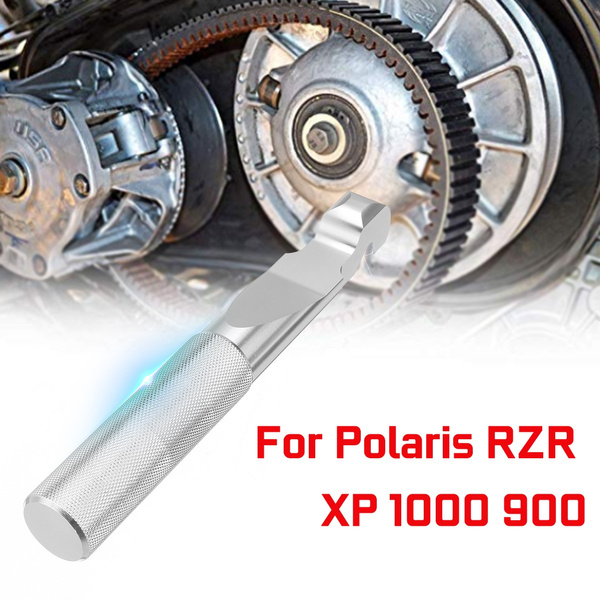
Rare and mostly found in older models, but other variations can be found. For example - "automatic" with the ability to manually shift gears.
Manual ATVs are a little more difficult to drive (at least at first, until you get used to it), but you can more accurately select the appropriate mode. And vice versa: CVT "boxes" are much easier to operate, they are easy to master for a beginner who gets behind the wheel of an ATV for the first time. But on the other hand, with active driving along a route with variable difficulty, riding a CVT will be a little less convenient.
For example: you are driving on a flat packed dirt road on H and you see a large stretch of muddy road ahead with deep mud (or a steep hill, or bumps, or stones). You will have to come to a complete stop and shift to L, drive through mud, and come back to a dry road, come to a complete stop again and shift back to H. , like motorcycles, and a manual clutch lever on the handlebar on the left.
, like motorcycles, and a manual clutch lever on the handlebar on the left.
The foot lever device can be of two types:
The shift itself is carried out in the same way as on motorcycles:
 If you have experience driving any vehicle with a manual transmission, you will quickly get used to an ATV with such a gearbox.
If you have experience driving any vehicle with a manual transmission, you will quickly get used to an ATV with such a gearbox. When exactly to switch speeds up and down is determined by the tachometer, speed, road complexity, weight of the load taken and the characteristics of the ATV itself (power, weight).
CVT gearboxes are much more common on ATVs. The clutch in them does not need to be squeezed out, and the “mode” of driving forward is selected from two (most often) options: in high (suitable for driving on an easy route) or in low (for difficult sections, steep climbs and towing) gears.